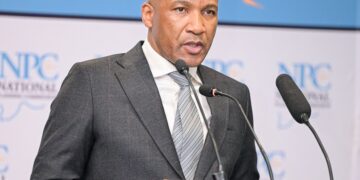- Tsaone Segaetsho
The Bank of Botswana (BoB) this week held its Monetary Policy Committee (MPC) against a backdrop of mounting pressure on the domestic financial system.
While keeping the Monetary Policy Rate (MoPR) unchanged at 1.9 percent, where it has been since June 2025, the central bank warned of rising borrowing costs, uneven liquidity across commercial banks, and an economy grappling with contraction.
According to the MPC, a combination of concentrated funding structures and significant offshore asset holdings by some banks has contributed to liquidity distortions in the financial sector. This imbalance has been compounded by the economy’s heavy reliance on government spending, resulting in a liquidity squeeze that has forced affected banks to compete aggressively for deposits. “This has triggered a surge in wholesale deposit rates, leading to higher borrowing costs for consumers and businesses, occurring against the backdrop of real GDP contraction,” the committee noted.
The central bank acknowledged that the inflation outlook has shifted considerably, driven by exchange rate adjustments and higher-than-expected price pressures. Inflation is projected to average 3.5 percent in 2025 and 5.9 percent in 2026, with a temporary breach of the target range anticipated in the second quarter of 2026.
In its assessment, the BoB highlighted persistent structural challenges, including limited economic diversification and weakening fiscal and external positions. To counter this, the bank underscored the need for alignment of policy frameworks to foster resilience. It welcomed the recently launched Botswana Economic Transformation Programme (BETP), describing it as a potential “game-changer” with its focus on high-impact projects, agile decision-making, and real-time implementation.
Globally, the MPC flagged heightened uncertainty from shifting trade policies and geopolitical tensions, pointing specifically to the 15 percent import tariff levied by the United States on Botswana’s exports. The bank cautioned that such measures could adversely affect trade flows, with further clarity expected in the forthcoming IMF World Economic Outlook in October 2025.
To address immediate liquidity constraints, the BoB outlined a series of interventions. These include reducing the Primary Reserve Requirement from 2.5 percent to zero, releasing P1.8 billion into the banking system, extending repo maturities to 30 days, and raising the foreign currency trading threshold for banks from USD 1 million to USD 5 million. The central bank has also widened foreign exchange trading margins with commercial banks, enhanced oversight of foreign currency holdings, and engaged lenders to avoid interest rate increases that undermine the accommodative policy stance.
The bank reported early signs of stabilisation, citing increased uptake of longer-term repos, a pause in prime lending rate hikes, and reduced foreign exchange trading with the central bank. However, it cautioned that these measures are only stopgaps.
“Given that the current challenges are rooted in structural features of the market and the economy, the overall impact of these measures cannot be long lasting,” the MPC said.
Sustainable recovery, it stressed, requires broader reforms, including diversification of export earnings beyond diamonds and the development of import-substituting industries.










